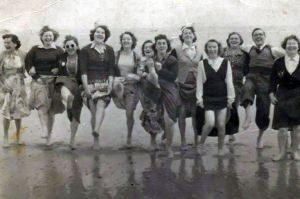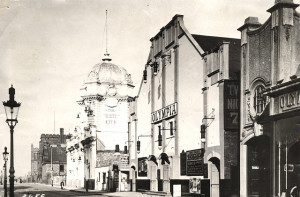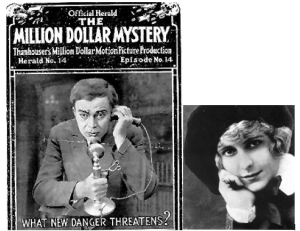Wilhelmina Tobias: Habits and Culture
Aside from the section on her childhood memories, one of the longest sections of Wilhelmina’s memoir concerns what she titles as entertainment. As this is a childhood memoir Wilhelmina’s idea of entertainment revolved around her summer holidays, the games she played with her friends, as well as visits to places such as penny matinee at the local picture hall, the park, the seaside and school trips.

Wilhelmina’s mention of the picture halls is interesting as they were still a new phenomenon at the turn of the twentieth century. The first moving picture was shot in Leeds by Louis Le Prince in 1888 (Howells, 2006) and was followed by the first moving pictures developed on celluloid film in 1889. The first British film ‘Incident at Clovelly Cottage’ to be shown on the first working 35 mm camera in Britain came soon after, in February 1895. Several British film companies opened to meet the demand for new films whilst cheap matinees, as Wilhelmina describes, offered the chance for the masses to be exposed to the new forms of media.

Wilhelmina recalls that ‘We stood in great long queues for hours before the doors opened’ whch just shows the popularity of the picture halls. She and each of the other children were all given a bar of sticky toffee or a stick of rock, no doubt to keep them all quiet before a ‘whole afternoon’s show’. A whole afternoon’s show featured a number of different films and shorts, all accompanied by a live pianist. Wlhelmina describes the usual order of running in the memoir as ‘“Pathe’s Gazette” (the news), a tense drama, […] a side splitting comedy with the Keystone Cops, Buster Keaton, Chester Conklin etc., followed by the “piece de resistance” an instalment of the current serial. The ones I remember best are “The Million Dollar Mystery” starring Pearl White; and “The Man in the Iron Mask”. We kids could scarcely wait from one Saturday to the next to see how the heroine & hero would be saved from their terrible predicaments. Our parents too paid a weekly visit to the local cinema & followed the same serials as avidly as we did.’

Serials were multi part films that Ben Singer argued could be ‘crucial to…understanding…popular culture in the decades around the turn of the century and beyond.’ He describes how adverts with interesting graphics covering two page spreads appeared in bold and vivid colours in trade journals of the time. Singer also noted that he was ‘struck by the frequency with which female stars received top billing and publicity exposure and Wilhelmina exhibits this with her recollection of Pearl White as the star of her favourite serial. Singer also refers to the ‘star system’ that saw the promotion of the star instead of the studio, genre or director, that was central to marketing during this time. The promotion of the star ahead of all else probably explains why Wilhelmina appears to have remembered Pearl White but it is unlikely as the star of The Million Dollar mystery was Florence La Badie. Pearl White starred in the serials The Perils of Pauline and sequel, The Exploits of Elaine (McHendry, 1980)
From Wilhelmia’s memoir its clear to see the regard in which she held the penny theatre and the stars that were borne out of their popularity.
Works cited
Howells, R (2006). Louis Le Prince: the body of evidence. Screen (Oxford Journals) 47 (2): 179–200.
McHenry, R, ed. (1980). Famous American Women: A Biographical Dictionary from Colonial Times to the Present. Courier Dover Publications. p. 440
Tobias, Wilhelmina, Childhood Memories, MS pp.22 (c, 5,000 words). Brunel University Library.
Images
Fig 1.
Fig 2.
Fig 3. and

Leave a Reply